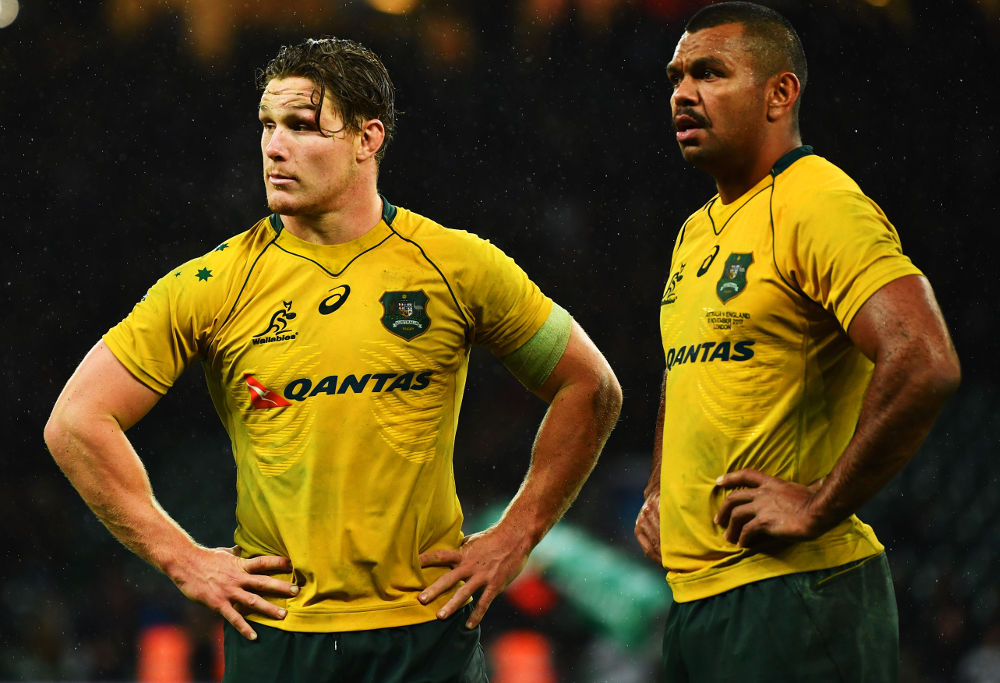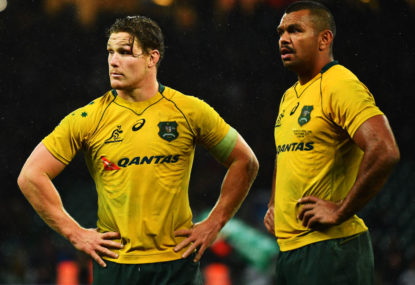I’ve often thought that the way Ireland structured themselves for the professional game was the model Australian rugby should be looking at.
Over the weekend however it became very clear that Scotland is the team the Wallabies can learn the most from in the short term.
Ireland and Australia – now – are similar in their professional set-up. Domestically they have four teams, two of them traditional powerhouses and one more nipping at their heels, and a fourth initially set-up as a development path, but certainly capable of success, as Connacht showed in 2015-16.
Ireland’s High-Performance Unit, now run by former Queensland hooker and Brumbies and Blues coach, David Nucifora, makes no bones about its intent. They want to win a Rugby World Cup and become the best team in the world.
They’re aggressive in the way they’re trying to do this, particularly around the recruitment of ‘project players’, but realistically, they’re doing whatever they think they need to do to compete with the Englands and New Zealands of the world.
In terms of structure and working to a common goal, Australian rugby could learn a lot from their Irish counterparts, and indeed, after a few lean years, Ireland look to be on a solid upward trajectory again.
Scotland haven’t quite got the same professional setup and the development pathways as Ireland – they’re still clearing up the various amateur and semi-professional tiers below the professional sides (sound familiar?) – but the Scottish game is improving nicely courtesy of a resurgent national side. The Scots have in the last week and a bit pushed the All Blacks to the very end, and now run up a record win over Australia.
That’s a fair way I’ve gone to get to this one point: it was hard to be too upset about Scotland’s thumping win over the Wallabies because they’re doing exactly what Australian rugby wants to do. They’re winning their way to public popularity.
Their win at Murrayfield was exactly the sort of rugby the Wallabies wish they could play consistently. Scotland’s former Kiwi coach Vern Cotter worked wonders with their defensive setup and ironed out some significant frailties over the course of his tenure, and since taking over, former champion flyhalf Gregor Townsend has built upon this crucial foundation one of the best attacking games in world rugby.

(Photo by Dan Mullan/Getty Images)
Scotland play, on the surface, a pretty simple game. Their set piece is pretty solid; consistently well-performing, capable of upsetting the best packs in the game in any one contest, but still not perfect. Their breakdown has always been strong, but now it is both strong and confident.
And from these two important bases, they attack with flair. They are only too willing to play to the strengths of the individuals in the side. In Finn Russell and Huw Jones, Scotland have two genuinely world class attacking players to build around, and they both played starring roles in the crushing win over the Wallabies.
It’s no wonder there is serious optimism around Scotland’s Six Nations chance now. So good was their display, the UK bookies have wound them in to third favourites for the 2018 series. They trail England and are now not far behind Ireland at all.
Historically, Australia has beaten Scotland twice in every three matches going back ninety years. But the rivalry has built up nicely over the last decade, with Scotland going from being a bit of a pain in the arse in the late 2010s to now being a full-blown bogey side, with no fear of playing the Wallabies at all.
The wood the Wallabies have over Wales is exactly the same as what the Scots currently hold over Australia.
The 53-24 win on Saturday now means Scotland have won four of the last seven matches between the two sides since 2009. It’s two-nil in 2017 now, and if the scoreboard didn’t really reflect Scotland’s dominance in Sydney back in June, it certainly did the second time around.
The three must-improve items I listed after the loss to England last week remain unaddressed.
Australia’s go-forward was again lacking overall. They carried roughly the same amount but made only two-thirds as much ground Scotland did. And the Scots did more with it. They had 18 clean breaks to three, and 35 defenders beaten to 20. While Scotland defended at 90 per cent efficiency from more than 200 tackle attempts, the Wallabies missed one in every four.
Improved discipline? Don’t make me laugh. From the moment Sekope Kepu decided to clear out Hamish Watson to the moment his shoulder connected with the Scottish flanker’s chin, there wasn’t a single element of legality. Arm tucked in, led with the shoulder, forceful impact, contact with the head. The decision to pull the red card out was so obvious, it didn’t need the confirming TMO consultation.

(Photo by Dan Mullan/Getty Images)
As for Kurtley Beale, his attempts to explain away his deliberate knocking of the ball dead-in-goal were even more pitiful than last week against England. A tip Kurtley, when your pleading doesn’t even remotely match the abundant evidence being replayed above your head, you’re not helping your cause.
Urgency? As bad as last week’s, and maybe even worse in conceding five tries in the last 31 minutes. As with last week, the closest jersey to a loose ball was rarely gold.
And so for yet another year, the Wallabies have again failed to capitalise on some very promising improvements shown during the international season.
A 7-5-2 win-loss-draw record is technically a winning season, but I think we all know that seven from fourteen is barely par. Once again, the term ‘consistently inconsistent’ is the best descriptor of a Wallabies side that still doesn’t really know how to make the most of opportunities or any slight hint of momentum.
Calls that the Brisbane Bledisloe win would be another false dawn were mostly cynical guesswork at the time, but worryingly accurate in the end.
Michael Cheika has used a lot of players in 2017, another dozen or so debutants along the way, but it still feels like we’re as far away as ever from knowing what the best side looks like. While there is genuine depth in some areas – like the outside backs and even the centres – it still feels like the lock combination is a lottery.

(Photo by Jason O’Brien/Getty Images)
There’s theoretically a traceable lineage of back-up no.9s, yet the notional third-choice scrumhalf wouldn’t have played four full games at any level since early August. Flyhalf is even worse, with the second-choice playing on the wing, and the assumed third choice probably still enjoying NRC celebrations.
The Wallabies, therefore, have ended 2017 as they started, which is probably fitting for what truly has been the annus horribilis for Australian rugby.
But there are plenty of lessons to be taken out of the Scotland games this year. We just need to look beyond the results themselves, and look more deeply at how they came to be.
































































































